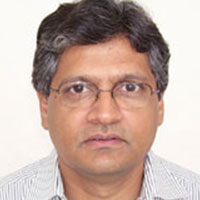The outcome of the recent WTO meetings at Bali is a stopgap arrangement, which implies that the Indian government does not have to make any changes in the implementation of the new Food Security Act in the near future. In this article, the authors suggest disentangling consumer support and producer support via cash transfers so that India can build a safety net for its poor without violating WTO agreements.
Misunderstandings about the World Trade Organization (WTO) are pervasive. The media coverage of the recent WTO meetings at Bali has added to the confusion. The bone of contention was the government procurement of food grains in India under the National Food Security Act (NFSA)1. The final outcome is a stopgap arrangement that has bought the Indian government some time; most importantly, it does not have to undertake any changes before the parliamentary elections. Some people have celebrated this outcome as a victory. Others have bemoaned it as a capitulation.
It is as if it were a zero-sum game2. If the US wins, India loses and vice-versa. What does it even mean when we say that India wins or loses? Is it Indian producers or consumers or both? Are their interests aligned? Do we have to support the domestic producers in order to protect the poor consumers? What is the rationale for having a measure such as Aggregate Measure of Support (AMS)?
Are the worries of the US and other like-minded countries totally misplaced? Is there a plausible solution that would allow the Indian government to build a safety net for the poor without violating the WTO agreements?
WTO limit on producer support: A methodological issue
The WTO’s mission is to dismantle impediments to free trade and this means disallowing special support by governments to their domestic producers. All the member countries have joined the WTO to ensure that their producers will not be at a disadvantage while competing in the markets of other countries. Therefore, in principle, all member countries would agree with the notion of limiting the level of support to domestic producers measured by the AMS.
There is, however, a methodological issue. The AMS is calculated as the product of the quantity procured multiplied by the difference between the procurement price and a fixed external price derived from world prices during 1986-1988. It is limited to 10% of the value of agricultural output. Given that international prices have increased substantially since 1986-1988, it would make sense to update this benchmark level. Clearly, with such a change in the formula, some cases now judged to be exceeding the allowable support would then be considered legitimate.
However, even after this change, India may have to be cautious about how high it can set the procurement price. The grain procurement required for implementing the NFSA is roughly 25% of the annual output. To satisfy the limit of 10% of the value of the output at the international market price, the procurement price would have to be no more than 50% higher than the market price.
Ensuring food security for the poor
However, the main point of contention is not merely technical. The G333 proposed that procurement from poor farmers should be exempt from this bound. This would have given a blanket exemption to the price support for the farmers in developing countries, and predictably the US objected. This was the beginning of the argument that erupted at Bali.
India’s Union minister of commerce and industry Anand Sharma argued that India be allowed to exceed the AMS on the grounds that the present system of government procurement and distribution ensures food security to the poor in India. How valid is this argument? Are the developed countries opposed to providing support to poor consumers in India?
First, note that the WTO agreements do not inhibit governments from providing consumer support since that does not harm the interests of producers in other countries. If the Government of India wanted to give direct cash transfers to all the consumers that it deems qualified to receive them, it would not be a WTO issue. It will also not be a WTO issue if the government procured the grain at market prices and distributed it cheaply.
It is a WTO issue only because our present system of delivering food subsidy involves producer support.
The central government procures wheat and rice not at market price but at an administered minimum support price (MSP).
The problem of excess food grain stocks
There is another WTO issue. Over the last decade the Government of India has consistently procured more than it has dispensed through its Public Distribution System (PDS). The stocks thus have grown way beyond what would be necessary for dampening price volatility. Such massive stocks are perceived as a threat by other countries because India could be dumping them in the international market. These are legitimate fears as India is a big player in the world grain market.
By sucking out the supply of grain from the market, excessive stocks are harmful to consumers. The rising MSP locks the country’s resources disproportionately in grain production at the cost of other foods such as pulses, vegetables and fruits. Thus, if the WTO disallows excessive stockpiling, it could hardly be deemed harmful to India as a whole.
Disentangle consumer and producer support via cash transfers
The crux of the problem is that in India the support to producers is entangled with the protection for consumers. This need not remain so.
Ideally, direct cash transfers to consumers would obviate the need for the government getting into the logistics of storage and distribution and provide a more effective safety net for consumers. If the infrastructure of rural banks is not quite ready for organising cash transfers, the delivery of food subsidy through fair price shops can continue until such infrastructure is ready.
But there is no need for procuring more than the PDS distribution requirements (plus 5 or 6 million tonnes required for other social programmes such as mid-day meals) as long as there are enough reserve stocks maintained for dampening price volatility.
There will be no continuous build-up of stocks under this system. The MSP does not have to be as high as it is now. It can serve as a price floor and typically the market price will be above it.
To sum up, concentration of price support on select few crops and their excessive stockpiling is in nobody’s interest. The need is to disentangle the producer support from the consumer support through cash transfers. This would be a win-win situation par excellence.
A version of this article appeared in Hindustan Times on January 6, 2014.
Notes:
- It should be pointed out that the problem arises from the way the Public Distribution System (PDS) is operated. The National Food Security Act (NFSA) has not greatly added to the amount of grain procured and has therefore , not created the problem.
- In economic theory, a zero-sum game is a mathematical representation of a situation in which a participant´s gain (or loss) is exactly balanced by the losses (or gains) of the other participant(s). If the total gains of the participants are added up, and the total losses are subtracted, they will sum to zero.
- The G33 is a group of developing countries that coordinate on trade and economic issues.




 15 January, 2014
15 January, 2014 






Comments will be held for moderation. Your contact information will not be made public.